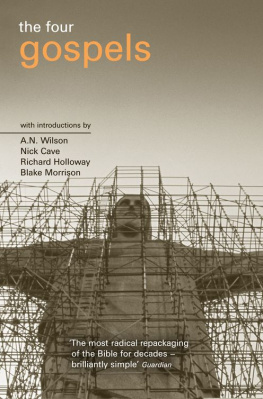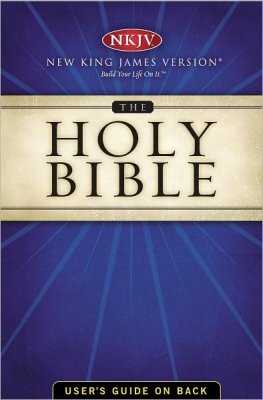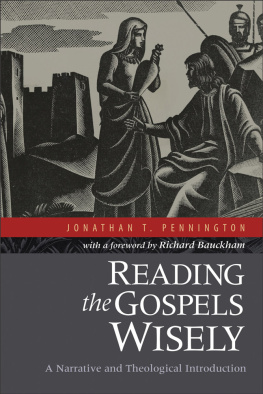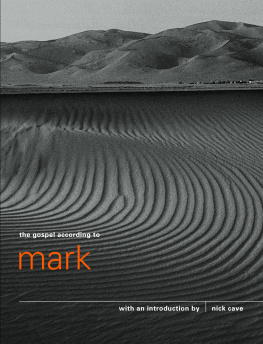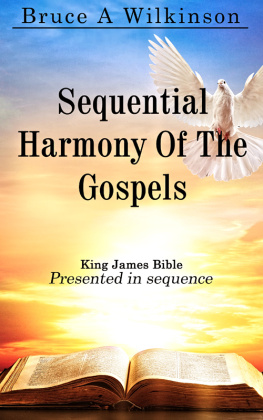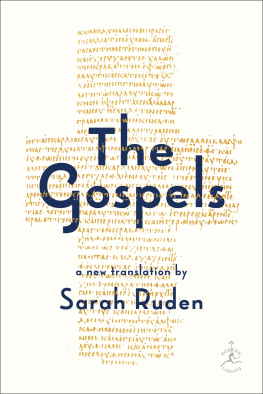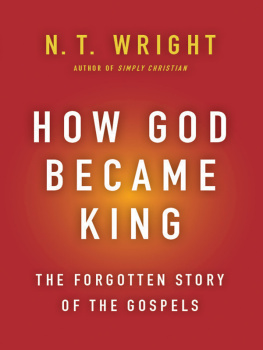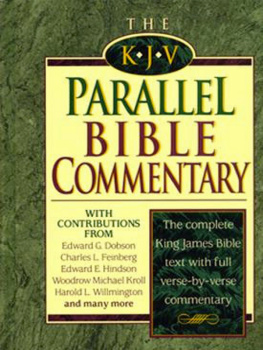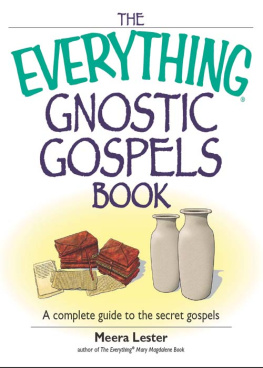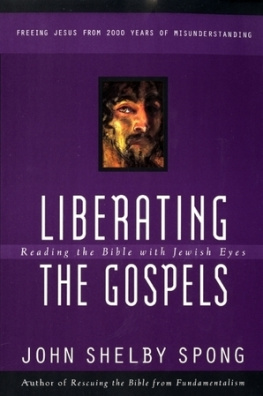Cave Nick - The Four Gospels
Here you can read online Cave Nick - The Four Gospels full text of the book (entire story) in english for free. Download pdf and epub, get meaning, cover and reviews about this ebook. year: 2010, publisher: Canongate Books, genre: Art. Description of the work, (preface) as well as reviews are available. Best literature library LitArk.com created for fans of good reading and offers a wide selection of genres:
Romance novel
Science fiction
Adventure
Detective
Science
History
Home and family
Prose
Art
Politics
Computer
Non-fiction
Religion
Business
Children
Humor
Choose a favorite category and find really read worthwhile books. Enjoy immersion in the world of imagination, feel the emotions of the characters or learn something new for yourself, make an fascinating discovery.
The Four Gospels: summary, description and annotation
We offer to read an annotation, description, summary or preface (depends on what the author of the book "The Four Gospels" wrote himself). If you haven't found the necessary information about the book — write in the comments, we will try to find it.
Encouraging the reading of the Bible as literature rather than doctrine, the four central gospels are presented here in the beauty of the Authorised King James Version, with four fresh, modern introductions.
The Four Gospels — read online for free the complete book (whole text) full work
Below is the text of the book, divided by pages. System saving the place of the last page read, allows you to conveniently read the book "The Four Gospels" online for free, without having to search again every time where you left off. Put a bookmark, and you can go to the page where you finished reading at any time.
Font size:
Interval:
Bookmark:
When an old friend rang me out of the blue in the summer of 1997, I had no idea that the call was going to set a ball rolling that still hasnt stopped. Matt Darby had two simple questions that he wanted me to answer: had anyone ever published the Bible in its constituent parts and if not, why not?
I was immediately intrigued by the questions. It was clear even to me with my scant knowledge of its publishing history that the Bible was not one book but a series of books. And yes, the Bibles daunting length only added to its inaccessibility. And yes, the publishers of the Bible tended to make their editions look as unappealing as possible. But however we jazzed the Good Book up would anyone actually buy such editions? Matt thought so and his evangelical fervour for the project was infectious.
Having recently persuaded someone famous (the rapper Ice T) to introduce an old text (Iceberg Slims memoir, Pimp) in order to bring it to a new audience, I had seen the impact that such unholy alliances can make and dropped this idea into the mix. Why dont we commission introductions from a diverse and interesting group of people? From people? From people who dont have a religious drum to beat. Fifteen hundred words. Make them personal not prescriptive. This will help us enormously when we publish the series and make people want to buy our editions. Wont it?
This discussion about the Bibles format and how the individual books could be re-presented to a modern audience in a modern way was to be the first of many. By the time we launched the series, fifteen months later, it had blossomed into something beautiful, not least because of Angus Hylands award-winning and stunning jacket designs but also because we had persuaded twelve good men and women to write introductions and they had excelled themselves. We licensed our editions around the world. The series generated an enormous amount of press ink and radio chatter. We sold a lot of copies and we were doing Gods work.
Or were we? Paul Slenert, self-appointed leader of the Jesus is Alive ministry, took umbrage at our hijacking of his Bible and tried to do everything in his power to stop the series being published. He tried to take us to court on a charge of blasphemy and when this failed he proceeded to send letters to every parish in the UK, warning them about the series and urging them to write and ask me personally to withdraw the series. I must have received over 2000 letters in teh following month, half of which simply regurgitated his outrage and repeated his belief that we would burn in hell. The other half were letters of support, encouraging us to ignore this deluded fool and saying that the Pocket Canons were the best thing to happen to the Bible in decades. It was fascinating to witness these diametrically opposed reactions and a fine reminder of how the Bible is still used to justify extremely dubious and dangerous attitudes (the Christian Right in America have since taken such abuse to new levels).
The Bible is, above all, a work of literature and we approached people who we felt would read it as such. It was in response to the King James version that they wrote the introductions that follow and the range of ideas expressed and experiences recounted is broader than any church that I know of. Some of the pieces are extremely personal but all of them are heartfelt and the wonderful array seems to me to epitomise what the whole project was about celebrating language, encouraging dialogue and respecting the individual.
Jamie Byng
Publisher
You are holding in your hands a tiny book which has changed more human lives than The Communist Manifesto or Freuds Interpretation of Dreams: a book which has shaped whole civilizations: a book which, for many people, has been not a gospel but The Gospel.
And you are bound to ask, because you are born out of time in a post-Christian age, into a world of newspapers and investigative reporting and science Is it true?
Did a Virgin really conceive (1:23) and give birth to a boy-child in Bethlehem (2:1)? Did wise men, guided by a star, come to worship him (2:2)? Did he grow up to be able to walk on water (14:26), to perform miracles, to found the Church (16:26), to rise from the dead?
Stop, stop. Dont ask. They are all questions which seem reasonable enough, but they will lead you into the most pointless, arid negativism. Your educated, scientific, modern mind will decide that no one ever walked on water; no Virgin ever conceived; that corpses do not come to life. And by rejecting this Gospel, you will reject one of the most disturbing and extraordinary books ever written; not, as you might think, on intelligent grounds, but because you (and I, alas) are too hemmed in by our imaginative limitations to see the sort of things this book is doing.
Before you apply to it the supposedly rational tests which you would apply to a newspaper report or a television documentary, imagine the chapters which describe the trial and Crucifixion of Christ set to music in Bachs Saint MatthewPassion. Consider the millions of people who, for the last 1900 years have recited the prayer (6:913) which begins Our Father. Think of the old women in Stalins Russia, when the men were too cowardly to profess their loyalty to the Church, who stubbornly continued to chant the opening verses of the Sermon on the Mount in defiance of the kgb. Blessed are they that mourn for they shall be comforted (5:4).
This is a book, not of easily-dismissed fairy tales but of power and passion; more arresting, disturbing and truthful than most reading-matter which you could buy for the price of a magazine on a station bookstall or in the paperback store. This is the Gospel of Christ, in all its terribleness, its wonder, its awe-inspiring truth and its self-contradictions.
Nor should you think that the contradictory emotions which assail and trouble you as you read it as trouble you they must are all storms and tempest inside you. For this book itself was born out of conflict and struggle and contradiction.
Matthews Gospel reflects the tension which saw the new religion what we call Christianity being fashioned from the old Judaism. It is by paradox an intensely Jewish, and an intensely anti-Jewish work indeed it is the great Ur-text of anti-semitism. The historical Jesus is not to be found in this book, nor in any book. He eludes our search. Matthews Jesus is seen through the prism of a particular faith, of a particular group, somewhere in the Mediterranean world. Rome? 85100 AD ?
By the time the book reached something like its present form (50 years after Jesus had left the scene?) Christianity was emerging as something which, if not distinct from Judaism, was at least repellent to most Jews. Pauls Letter to the Galatians (of circa 50 AD ) describes a rift between the first Christians of Asia Minor, converts of Paul, and the followers of Peter and James in Jerusalem who had known the earthly Jesus. It seems like an angry and irreconcilable quarrel. Paul, though, or because, a Jew, had decided that those who followed the Jewish Law (Torah), the Law given by God on Mount Sinai to his people, were living in bonds from which Christ came to set them free. For Peter and his friends, the dietary laws of Judaism, the requirement of circumcision, and so forth, were not bonds but wings; they were symbols of lives dedicated to God.
No compromise, surely, was possible, between these two ways? Either you circumcise your son or you dont. Either it is sinful to eat pork, or it isnt.
But to another generation, Matthews, the problems were different. The irreconcilables, rather than being fudged, are held together in self-contradiction. Peter and Paul, who in earlier New Testament texts were the leaders of opposing Ways, emerge in this text as co-partners (though, of course, Pauls ideas, rather than his name, are what we find here).
Font size:
Interval:
Bookmark:
Similar books «The Four Gospels»
Look at similar books to The Four Gospels. We have selected literature similar in name and meaning in the hope of providing readers with more options to find new, interesting, not yet read works.
Discussion, reviews of the book The Four Gospels and just readers' own opinions. Leave your comments, write what you think about the work, its meaning or the main characters. Specify what exactly you liked and what you didn't like, and why you think so.

